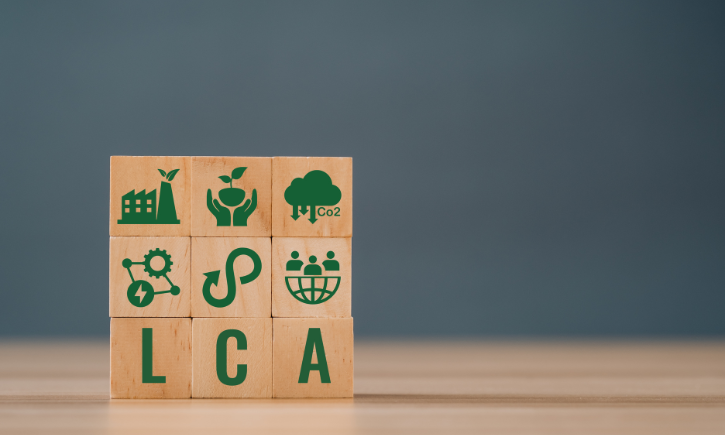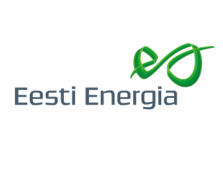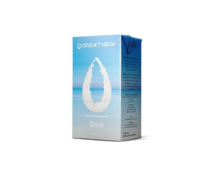What are life cycle assessments?
Behind every product, process or business unit are far-reaching ecological impacts. Life cycle assessments, based on ISO 14040 and 14044, open the door to greater insight into a company’s environmental impact.
They offer a deeper insight into the ecological dimensions that go beyond the CO2 footprint. LCAs make sustainability measurable and are the first step for companies on the road to environmentally conscious decisions.
Why create a life cycle assessment (LCA)?
Conducting a Life Cycle Assessment (LCA) is a crucial step for companies to understand the environmental footprint of products and services. This comprehensive analysis offers a wealth of benefits that go beyond mere environmental awareness.
All the advantages of life cycle assessment at a glance
Our services
Our services are designed to support companies and organizations on their path to environmental and climate responsibility. We offer a wide range of services that focus on the preparation of life cycle assessments. External tools are used to complete life cycle assessments and comply with legal requirements. We support you from data collection to employee training with the following services:
- Defining the main products and system boundaries
- Determination of the functional and declared unit
- As-is assessment including analysis of individual business processes
- Use of data from existing sustainability and management systems
- Definition of the life cycle
- Support with data collection and data management
- Calculation of sensitivity analyses
- Calculation of individual life cycle assessments using LCA software such as LCA for experts (formerly GaBi) or Umberto with Ecoinvent database
- Preparation of life cycle assessment reports in accordance with ISO 14040/44
- Verification of the LCA by a third, independent party
- Formulation of recommendations for action
- Creation of a clear summary as a marketing tool
- Employee training and support for continuous improvement
- Support in the development of environmental product declarations (EPD)
Unique advantages with PPP
Working with us brings unique benefits. They not only support the preparation of the LCA, but also the further implementation of more sustainable business practices. Ongoing support and training for employees are unique services that enable greater implementation success.
- Fast turnaround: Thanks to state-of-the-art software systems, we deliver results in record time.
- International team: Our global team is on hand to help you calculate and optimize the carbon footprint of your products.
- Industry expertise: Our team has in-depth knowledge of sustainability and can draw on extensive experience in various industries.
- Customized solutions: Every business is unique, and therefore we offer customized and individual solutions to meet your specific needs.
- Efficiency and time savings: Through standardized templates, we help you speed up the creation process and use your resources more efficiently.
- Continuous support: We are your long-term partner for sustainability. Our support does not end with the assessment, but also includes support in further development for the future.
Improved sustainability practices and a strengthened image: Improved sustainability practices can strengthen the image of the brand and the company. We help you to use the findings for your marketing strategy.
Free initial consultation
Would you like to find out more about life cycle assessment? Do not hesitate to contact us and arrange a free initial consultation. Our experts are at your disposal to discuss your specific requirements and offer you customized solutions.
Patrick Wortner
Partner | MBA and Eng., Dipl.-Ing. (FH)
Life cycle assessments and the value of LCA for a sustainable future
In today’s world, the concept of life cycle assessment is becoming increasingly important. But what exactly is behind this term, and why are life cycle assessments of crucial relevance for promoting sustainability?
Life cycle assessment is the comprehensive evaluation of the environmental impact of products and services over their entire life cycle.
This concept is crucial as it helps companies and societies to make more environmentally friendly decisions and thus promote sustainability.
Basics of life cycle assessment
Life cycle assessment is a key tool for assessing the direct or indirect environmental impact of products and services over a defined life cycle. The DIN ISO 14040 and 14044 series of standards play a key role here and ensure the quality and comparability of the results.
The life cycle approach enables a holistic assessment from raw material extraction to disposal. Innovative and advanced tools such as LCA for experts (formerly GaBi) or Umberto enable precise life cycle assessments.
Areas of application of life cycle assessments
The exploration of the versatile application possibilities of life cycle assessments in different industrial sectors is of great importance. LCA is particularly important for the optimization of product development, environmentally conscious material selection, process optimization, supply chain management as well as for environmental certifications and labels.
In the context of the construction industry, life cycle assessments are required as a basis for creating environmental product declarations (EPDs), which in turn are used in building certifications. Life cycle assessment is also used in agriculture to promote sustainable cultivation methods, food production and processing as well as organic farming.
The automotive and chemical industries are also areas where life cycle assessments are beneficial. In the automotive industry, many OEMs require their suppliers to carry out life cycle assessments in order to achieve sustainability targets.
In the chemical sector, these analyses are essential due to legal regulations on the environmental compatibility of chemicals.
References/Best Cases
Eesti Energia Aktsiaselts
Life cycle assessment according to ISO 14040/44
BORBET GmbH
Life cycle assessment according to ISO 14040/44
Greatview Aseptic Packaging Manufacturing GmbH
Life cycle assessment according to ISO 14040/44
Vimetco Extrusion
Life cycle assessment according to ISO 14040/44
Our environmental labeling is based exclusively on the normative requirements of ISO 14040 and ISO 14044. Our balances are calculated using recognized life cycle assessment software systems such as Umberto. Current databases, e.g. from Ecoinvent, are used as a basis for this. All calculations, decisions and interpretations are documented in a report. We do not limit ourselves to specific products, sectors or regional boundaries.
All inquiries regarding the process of preparing the balance sheets can be directed to info@ppp.ms. We want to consider and respect the interests of all our stakeholders.
What types of life cycle assessment are there?
There are different types of LCAs, each covering different aspects and phases of the life cycle of a product or service. The product life cycle assessment (LCA) or cradle-to-grave LCA looks at the entire life cycle of a particular product.
This includes the extraction of raw materials, production, use and disposal. With regard to the accounting framework, only partial aspects of the life cycle can be considered. For example, a cradle-to-gate LCA (from the cradle to the factory gate) only considers the environmental impact of raw material extraction and production.
If one or more additional modules from the downstream life cycle (use and/or disposal) are considered, this is referred to as a cradle-to-gate with options LCA. In contrast, the Organizational LCA considers the environmental impact of an entire organization or company. It also takes into account indirect influences such as supply chains and services.
Sectoral LCA focuses on a specific economic sector in order to enable a targeted analysis and the creation of benchmarks for sustainable practices. A further distinction can be made with regard to the environmental indicators considered. Different evaluation methods can be selected or additional indicators, such as rare earth metals for electrical products, to obtain a holistic picture.

Objectives and benefits of a life cycle assessment in accordance with ISO 14040/44
ISO 14040 and ISO 14044 are internationally recognised standards that form the methodological basis for life cycle assessment. These standards create a uniform framework for systematically analysing the environmental impacts of products and services over their entire life cycle.
This helps to ensure clarity, comparability, and transparency in life cycle assessment. This enables companies and organisations to make more sustainable decisions and systematically minimise their environmental impact.
How is a life cycle assessment prepared?
The preparation of a life cycle assessment in accordance with the ISO 14040 and ISO 14044 standards follows a structured process. This begins with the definition of the objectives of the analysis and areas of application, followed by the compilation of a comprehensive life cycle inventory (LCI).
All relevant input and output flows in the life cycle of a product or service are recorded here. In the next step, the data collected in the LCI is transferred to the Life Cycle Impact Assessment (LCIA), where the type and extent of the environmental impacts are usually calculated quantitatively using accounting software.
Finally, the results are interpreted to enable well-founded decisions on environmental performance. This standardised approach ensures transparency and comparability in life cycle assessment.
Advantages and disadvantages of life cycle assessments
The use of life cycle assessments in companies offers numerous advantages. It enables the precise recording of ecological impacts, strategic sustainability development, competitive advantages, cost savings and sustainable product development. However, complex data collection, data quality, resource requirements, limited standardisation and short-term perspectives can present challenges.
We offer expertise and solutions to help companies prepare and implement their life cycle assessments. At the same time, we help overcome obstacles to promote sustainable and future-orientated development.
Outlook
The outlook for LCA is promising and points to a more sustainable future. Companies and organisations are becoming increasingly aware of the need to understand and minimise their environmental impact.
In a world where sustainability and environmental protection are becoming increasingly important, LCAs are becoming an indispensable tool for measuring and improving environmental performance.
Policymakers are also realising this, and more and more standards and guidelines are being drawn up to record life cycle assessments. As technology advances and methods continue to evolve, LCAs will become even more accurate and efficient.
This comprehensive analysis will not only help to further reduce the environmental footprint, but will also drive the adoption of sustainable business practices.
Free initial consultation
Would you like to find out more about the product carbon footprint? Don’t hesitate to contact us and arrange a free initial consultation. Our experts are at your disposal to discuss your specific requirements and offer you customised solutions.
Patrick Wortner
Partner | MBA and Eng., Dipl.-Ing. (FH)
Frequently asked questions
What is the difference between a life cycle assessment and a carbon footprint?
The life cycle assessment is a comprehensive method for determining and evaluating the environmental impact of a product or service over its entire life cycle. In addition to CO2 emissions, other important environmental aspects are also taken into consideration. Among other things, resource consumption, energy use, water consumption and pollutant emissions are determined. A carbon footprint, on the other hand, focuses exclusively on recording the CO2 emissions of a product or process.
How do life cycle assessments contribute to promoting the circular economy?
Life cycle assessments play a crucial role in the circular economy. They help companies to assess the entire life cycle of their products. This enables the identification of opportunities to extend the life of products, reduce waste and utilise resources more efficiently. By assessing the environmental impact of materials and processes, companies can implement circular economy practices and develop more sustainable business models.
What is the importance of continuous data collection and verification?
Continuous data collection and verification enable accurate and reliable measurement of environmental impacts. Regular data updates and independent verifications ensure the credibility of the results and improve the quality of reporting.
How do companies integrate ecological factors into their product development?
Companies use life cycle assessments to integrate environmental information into the product development process. By assessing the environmental impact of different materials, manufacturing processes and utilisation scenarios, companies can make informed decisions. Products can thus be designed to be more ecologically compatible. This enables sustainable product development and helps to bring more environmentally friendly products onto the market.
What standards and guidelines exist for life cycle assessments?
The performance of life cycle assessments is regulated by international standards such as DIN ISO 14040 and ISO 14044. These standards define the principles, framework conditions and requirements for an accurate and comparable assessment of environmental impacts. By complying with these standards, companies can ensure that their life cycle assessments are valid and meaningful.
Can life cycle assessments contribute to reducing the ecological footprint?
Yes, definitely. Life cycle assessments provide comprehensive information on the environmental impact of products, services and processes. By utilising this information, companies can take targeted measures to reduce their environmental footprint. This can also reduce energy and resource consumption. Waste can also be reduced and sustainable practices promoted.
How can companies use life cycle assessments effectively?
Companies can use life cycle assessments to optimise their business processes and products. The life cycle assessment enables companies to communicate transparently about their environmental impact. The knowledge gained can be integrated into the corporate strategy in order to achieve long-term sustainability goals and at the same time realise economic benefits. During implementation, it helps to draw on existing management systems or sustainability assessment methods and thus utilise synergies between the systems. The data obtained thanks to the life cycle assessment can also be used for other sustainability assessment methods. For example, much of the data collected can be used to calculate the corporate carbon footprint or to create an energy audit.
What is the importance of continuous data collection and verification?
Continuous data collection and verification enable accurate and reliable measurement of environmental impacts. Regular data updates and independent verifications ensure the credibility of the results and improve the quality of reporting. Improvements and progress can thus be presented transparently.






